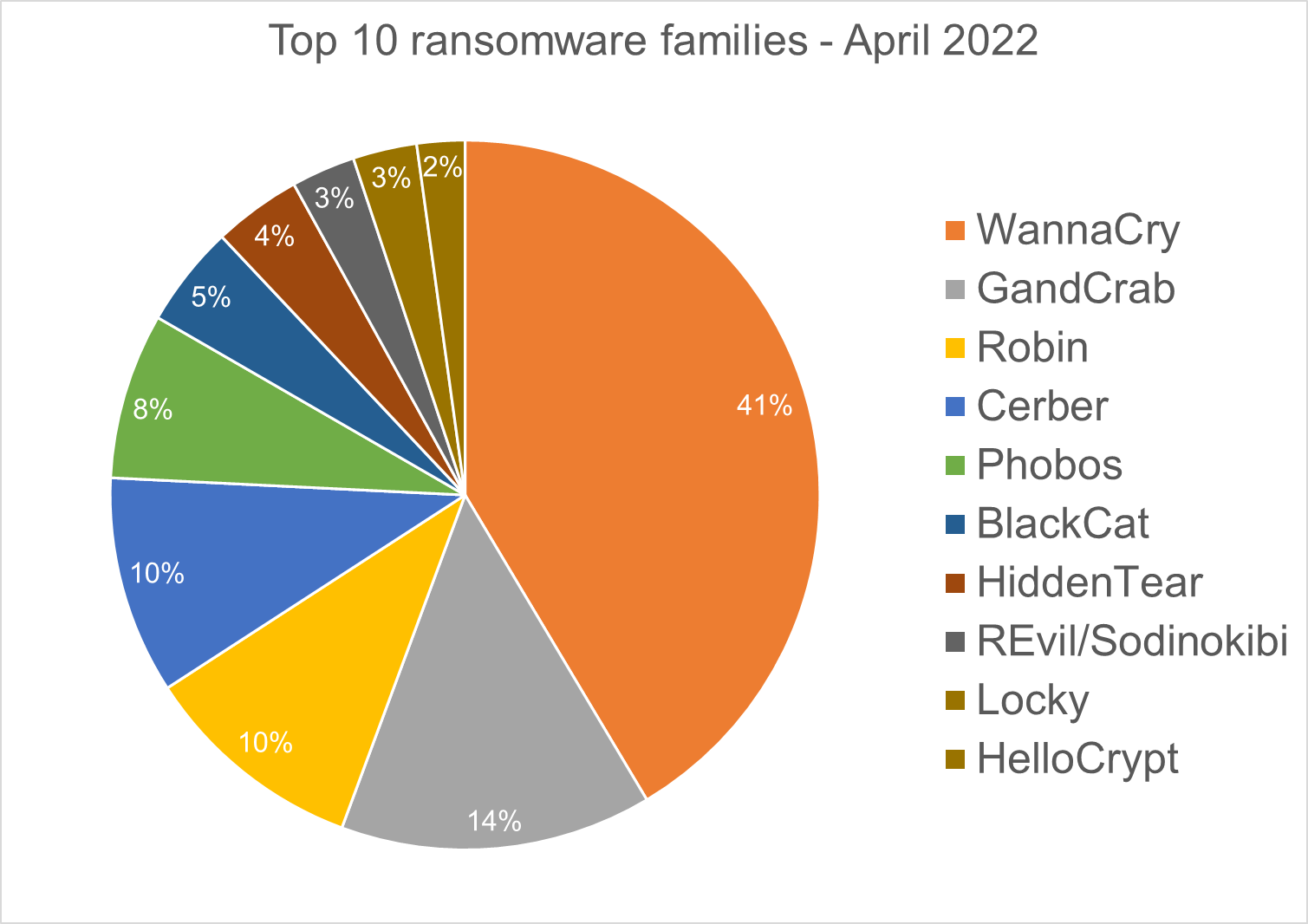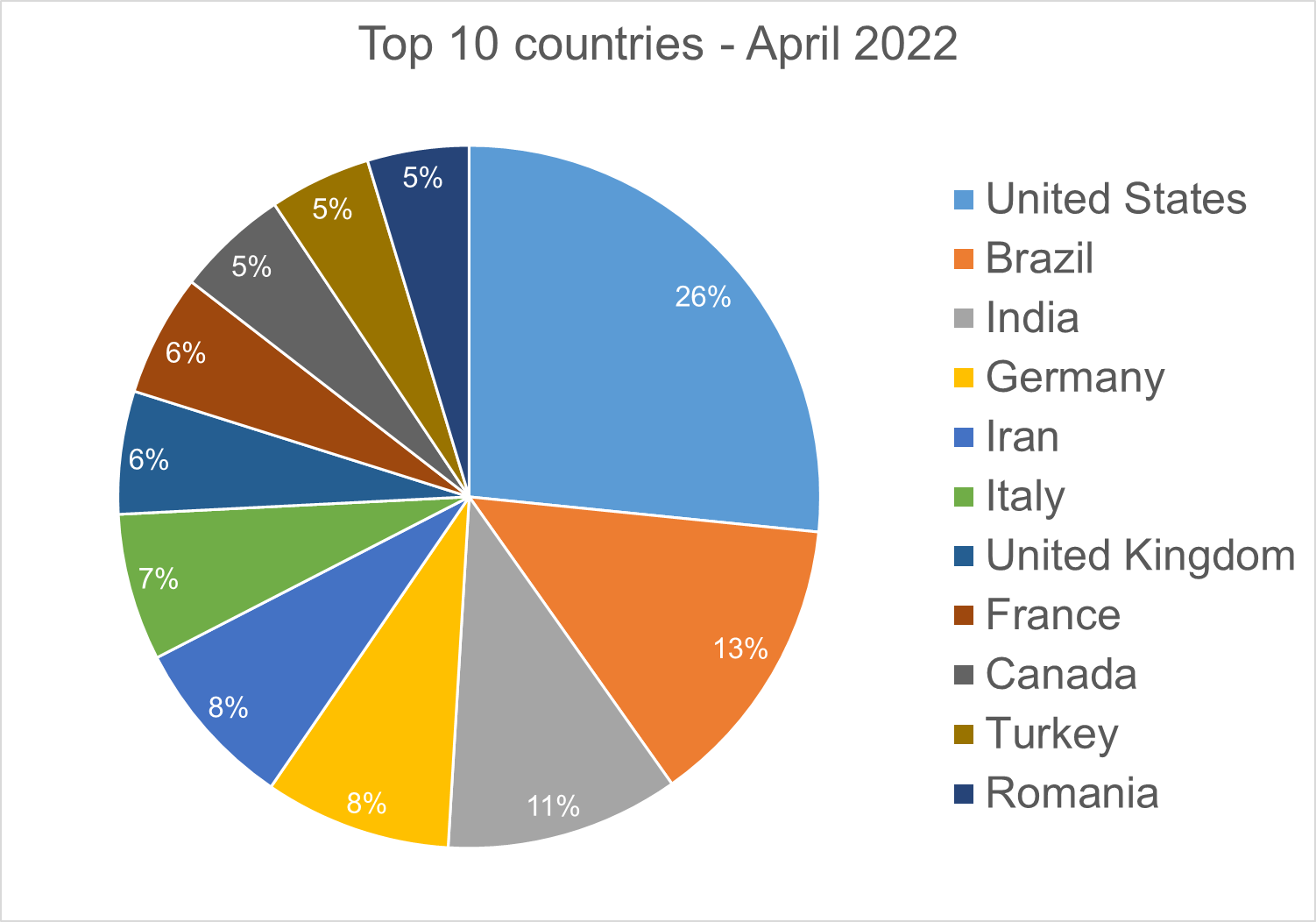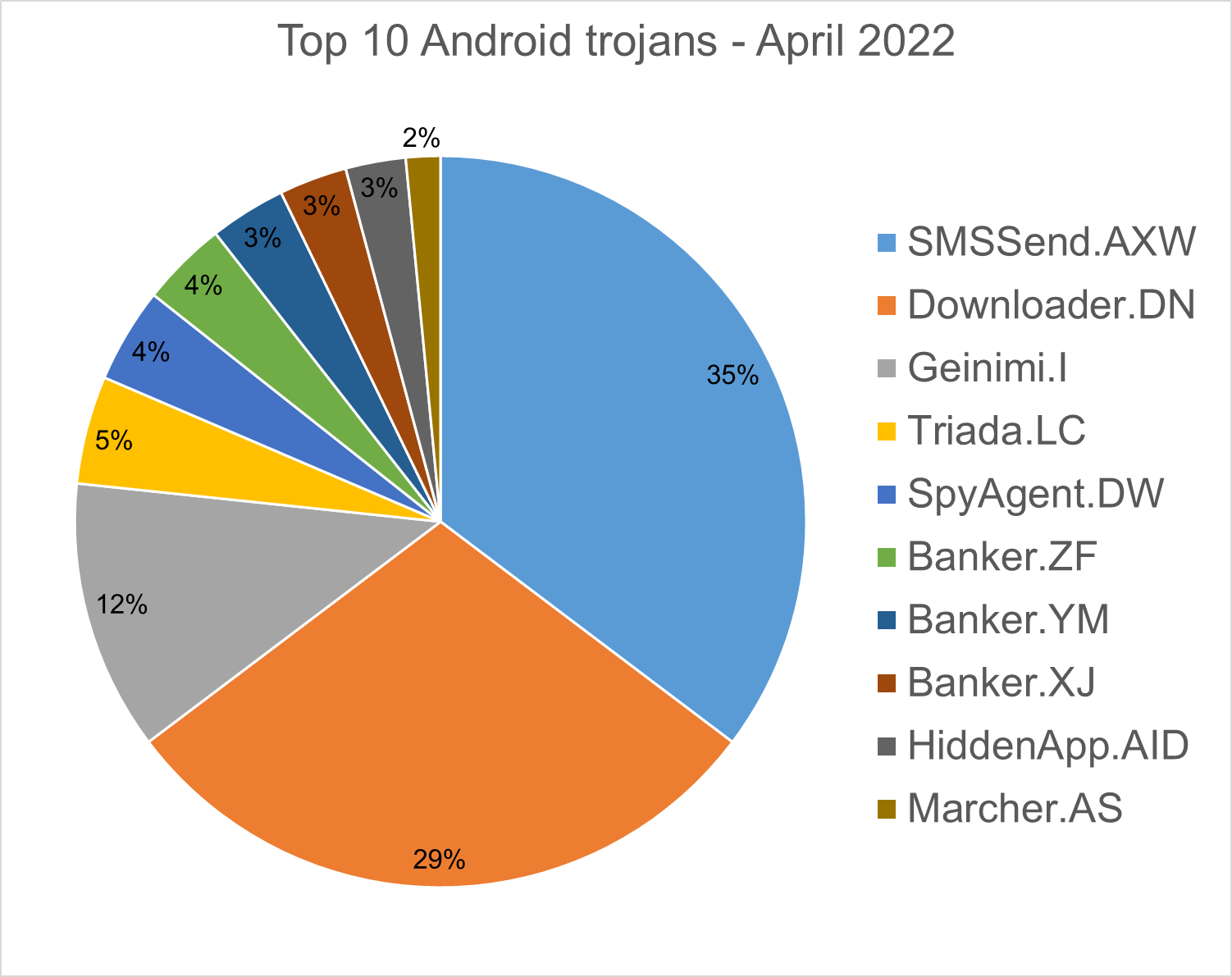MDR Insights
The MDR intelligence cell recognizes the threat that comes with homograph domains used in phishing attacks. Our monitoring looks for homograph activity targeting the MDR customer base. Although most phishing attacks will use common international domain names, the potential still exists for attackers to create homograph domains to target our customers. Additionally, we have seen business competitors purchase domains and redirect them to the competitor pages, so homographs also generate some business risk. Over the last quarter, ~5% of our intelligence alerts focused on typosquatting were actionable to our customers, as a security or business risk.
Businesses and users need to recognize the potential harm that could come with homograph domains, if not due to nation-state actors and criminal groups, then to the potential threat from shadow IT and competitor actions.
Ransomware Report
Spear phishing attacks are often used as an initial attack vector and ransomware infection is often the final stage of the kill chain. For this report, we analyzed malware detections collected in April 2022 from our static anti-malware engines. Note: we only count total cases, not how monetarily significant the impact of infection is. Opportunistic adversaries and some Ransomware-as-a-Service (RaaS) groups represent a higher percentage compared to groups that are more selective about their targets, since they prefer volume over higher value.
When looking at this data, remember these are ransomware detections, not infections.
Top 10 Ransomware Families
We analyzed malware detections from April 1 to April 30. In total, we identified 191 ransomware families. The number of detected ransomware families can vary each month, depending on the current ransomware campaigns in different countries.

Top 10 Countries
In total, we detected ransomware from 151 countries in our dataset this month. Ransomware continues to be a threat that touches almost the entire world. Below is a list of the top 10 countries most impacted by ransomware. Many ransomware attacks continue to be opportunistic, and the size of population is correlated to the number of detections.

Top 10 Industries
For our dataset, we have been able to assign 17% of detections to specific industries. Telecommunications services are particularly high as their customers are included within the detections.

Android trojans
Below are the top 10 trojans targeting Android we have seen in our telemetry during April 2022.

SMSSend.AXW - Malware that tries to register as the default SMS application on the first run by requesting a consent of the user. If successful, it collects the user's incoming and outgoing messages and forwards them to a Command & Control (C&C) server.
Downloader.DN – Repacked applications taken from Google App Store and bundled with aggressive adware. Some adware downloads other malware variants.
Geinimi.I - Applications that have been repacked with aggressive adware.
Triada.LC - Malware that gathers sensitive information about a device (Device IDs, Subscriber IDs, MAC addresses) and sends them to a malicious C&C server. The C&C server responds by sending back a link to a payload which the malware downloads and executes.
SpyAgent.DW - Applications that exfiltrate sensitive data like SMS messages, call logs, contacts, or GPS location.
Banker.ZF – Applications that disguise themselves as banking apps and can imitate conversation with customer support. When the malware runs for the first time, it asks for permissions to access contacts, microphone, geolocation, and camera. Once the permissions are granted, the malware can receive commands from the C&C server to exfiltrate sensitive data from the phone.
Banker.XJ, YM - Applications that drop and install encrypted modules. This trojan grants device admin privileges, and gains access to manage phone calls and text messages. After deploying, it maintains a connection with the C&C server to receive command and upload sensitive information.
HiddenApp.AID - Aggressive adware that impersonates adblock applications. When running for the first time, it asks permission to display on top of other apps. With this permission, the application can hide from the launcher.
Marcher.AS – Applications that disguise themselves as Play Store applications. The malware tries to ask for accessibility permissions to capture keystrokes, and also uses the VNC screen recording function to log user’s activity on the phone.
Homograph Phishing Report
Homograph attacks work to abuse international domain names (IDN). Threat actors create international domain names that spoof a target domain name. When we talk about “target” of IDN homograph phishing attacks, we refer to the domain that threat actors are trying to impersonate. You can read more about this type of attack in one of our previous reports.
Below is the list of the top 10 most common targets for phishing sites.

About Bitdefender Threat Debrief
The Bitdefender Threat Debrief (BDTD) is a monthly series analyzing threat news, trends, and research from the previous month. Don’t miss the next BDTD release, subscribe to the Business Insights blog, and follow us on Twitter. You can find all previous debriefs here.
Bitdefender provides cybersecurity solutions and advanced threat protection to hundreds of millions of endpoints worldwide. More than 150 technology brands have licensed and added Bitdefender technology to their product or service offerings. This vast OEM ecosystem complements telemetry data already collected from our business and consumer solutions. To give you some idea of the scale, Bitdefender Labs discover 400+ new threats each minute and validate 30 billion threat queries daily. This gives us one of the industry’s most extensive real-time views of the evolving threat landscape.
We would like to thank Bitdefenders Tyler Baker, Alin Damian, Mihai Leonte, Ioan Marculet, Andrei Mogage, Sean Nikkel, Daniel ONeill, Ioan Stan, Marius Tivadar, and Horia Zegheru (sorted alphabetically) for their help with putting this report together.







